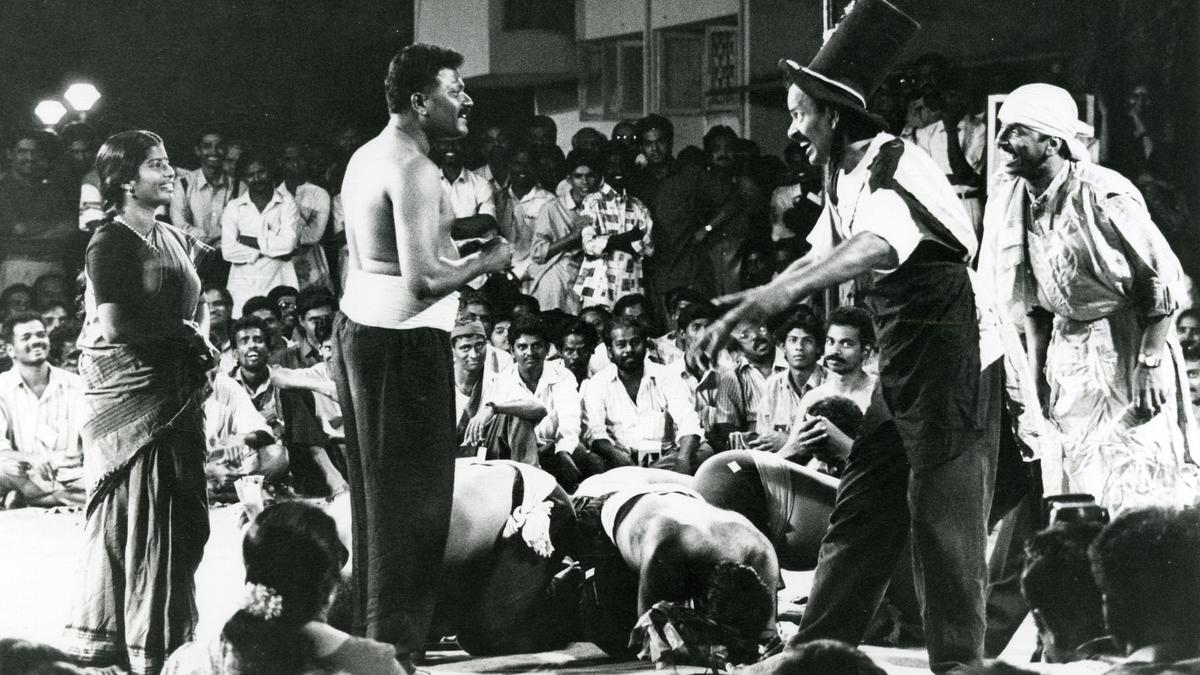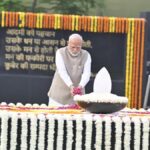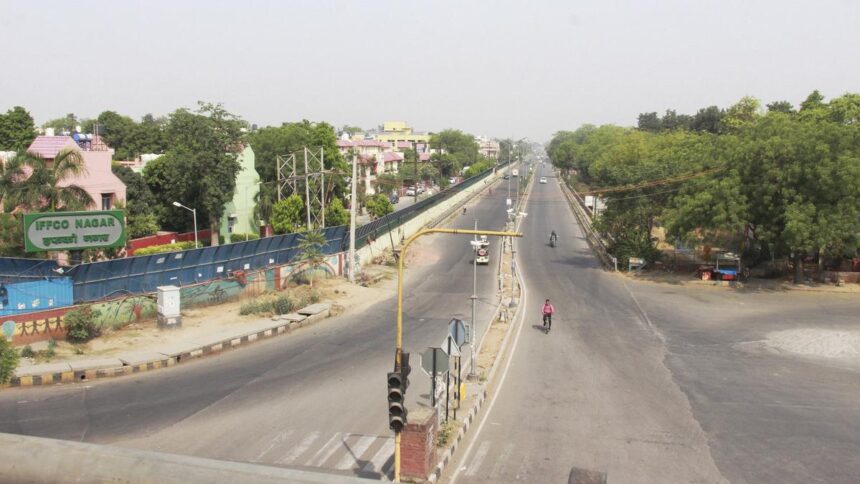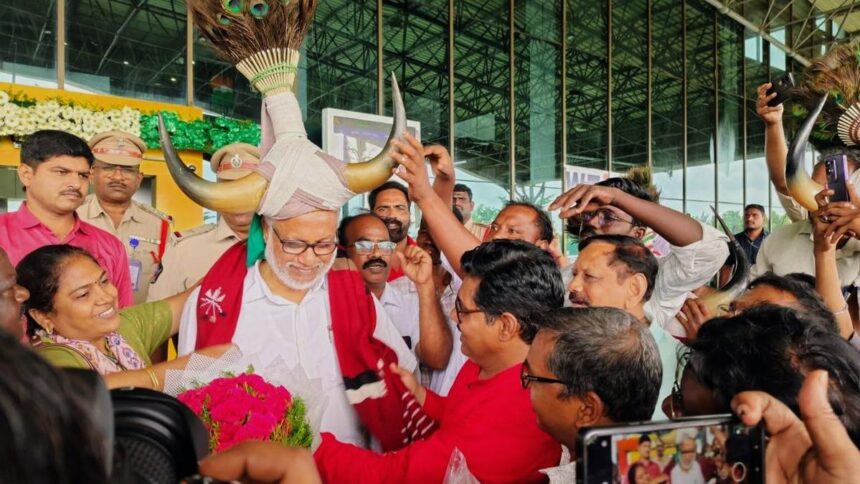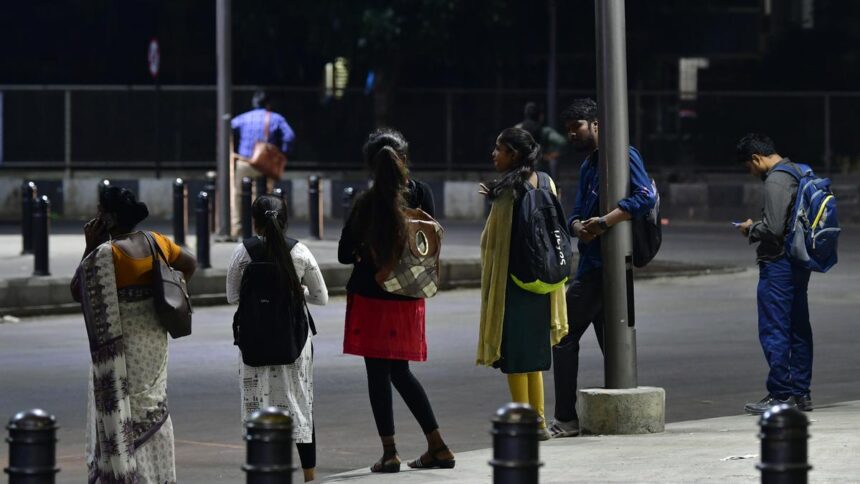
A scene from Chennai Kalai Kuzhu’s Uram; troupes such as Chennai Kalai Kuzhu and Koothu-P-Pattrai have focused on contemporary social issues.
| Photo Credit: The Hindu Archives
Over the past century, Tamil theatre and the city of Chennai have evolved in tandem. From puranic tales and nationalist dramas to political satires and tech-driven experiments, the city’s stages were influenced by its social and cultural shifts.
Thiruvottiyur Kasiviswanatha Mudaliar made pioneering efforts as early as the 1860s with his play Dumbachary Vilasam. Pammal Sambandha Mudaliyar, regarded as the father of modern Tamil theatre, founded the Suguna Vilasa Sabha in 1891 in Madras, first based in George Town and later on moved to Mount Road. The sabha popularised prose plays with realistic acting and minimal songs. Sambandha Mudaliyar wrote over 100 plays, acting in most of them. His comic masterpiece Sabapathy won wide acclaim. The Victoria Public Hall was a major venue for his troupe.
Sankaradas Swamigal professionalised theatre by training artists through his Samarasa Sanmarga Sabha. His work spurred the rise of Boys’ Companies, which staged numerous hits. In 1922, during the Swadeshi Movement, T.P. Krishnasamy Pavalar’s Kadharin Vettri was banned by the British in Madras. Retitled Kadhar Bhakti, it was later performed nationwide, even at an exhibition in London.
Feminist theatre activist A. Mangai recalls that in the early 20th Century, Balamani Ammal broke new ground as an actor and producer by founding the first woman-run theatre company with an all-female cast. Along with her sister Rajambal, she staged the first adaptation of J.R. Rangaraju’s detective novel Rajambal. Othavadai Theatre near Central Station was another important hub, hosting stalwarts such as M.R. Radha and N.S. Krishnan. The T.K.S. Brothers dominated the stage for decades with plays like Uyiroviyam, Rajaraja Cholan, and Avvaiyar.
Ms. Mangai says Tamil theatre’s themes were never wholly puranic. Works such as Kovalan Kadhai portrayed the lives of ordinary people, while others addressed political and social issues. The Dravidian movement brought socio-political narratives to Tamil theatre through figures such as C.N. Annadurai, M. Karunanidhi, and M.R. Radha, who later left their mark on cinema and politics.
By the mid-20th Century, sabhas with paid memberships flourished in south Madras. Mylapore and T. Nagar were studded with sabhas, staging everything from puranas to political satires. Komal Swaminthan played an instrumental role in organising annual theatre festivals in Madras.
Several plays by Cho. Ramasamy, Bombay Gnanam, Kathadi Ramamurthy, Y. Gee. Mahendra, S.Ve. Sekhar, and Crazy Mohan laced with melodrama and humour received wide appreciation among the middle class.
Evergreen comedy
“Crazy Mohan used to take themes from household situations and add loud humour to it. We continue to stage a play that we first staged in 1979 with the same theme. Audiences enjoyed it back then, they still relish it now,” says playwright ‘Maadhu’ Balaji, Crazy Mohan’s brother.
In the 1980s, troupes such as Koothu-P-Pattrai, founded by N. Muthuswamy, and Chennai Kalai Kuzhu, led by Pralayan, focused on contemporary social issues, adding a fresh dimension to Tamil theatre.
Ms. Mangai said iconic dancer-choreographer Chandralekha’s Spaces Auditorium in Besant Nagar had become a home for theatre groups experimenting and conducting workshops. Chennai Sangamam, the annual cultural festival, has also played a key role in making performances more accessible to the public.
Amateur Tamil theatre artist Karthik Bhatt says, “More troupes are coming up in Chennai and experimenting with different themes and new production values. They also engage in novel methods and make active attempts to take theatre to the next generation.”
Today, venues such as Chennai Theatre Academy, Medai, Idam, and Sangamam keep Tamil theatre vibrant. Yet, shrinking performances and rehearsal spaces remain a concern.
“Availability and accessibility of places for rehearsals and group performances have shrunk. We should reimagine urban spaces. Architects and urban planners should take into account developing spaces for creative art forms,” Ms. Mangai adds.
Published – August 16, 2025 09:01 am IST








